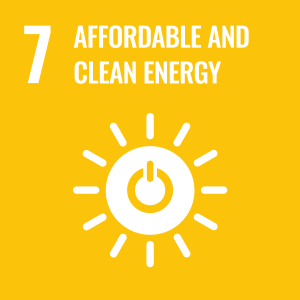
Dr Michael J Pekris
About
Biography
Dr Michael Pekris is a Senior Lecturer in Mechanical Engineering Sciences and Director of Employability (Mechanical Engineering) within the School of Engineering. He completed his undergraduate and Masters degree in Engineering Science at the University of Oxford in 2004, and was a member of St Catherine's College. His Masters thesis was on liquid crystal heat transfer measurements in trapezoidal passages with jets for high pressure turbine blade internal cooling. Following a year in industry, working in a technical role at a mobile telecommunications consultancy, Michael returned to the Osney Thermofluids Laboratory in the Department of Engineering Science at Oxford, and by 2010 completed a Rolls-Royce/EPSRC funded doctorate in Mechanical Engineering. His work led to improvements in the industrial design of compliant contacting shaft seal technology for jet engines. He held a stipendiary lectureship at St Hugh's College, Oxford between 2007 and 2009, delivering mechanical engineering modules in the area of thermofluids and turbomachinery.
Before joining Surrey University in 2016, Michael worked in applied Research & Development within the Structures & Transmissions department (Gas Turbine Supply Chain) at Rolls Royce. There he led UK government supported research projects into advanced seal technology for civil aircraft, in collaboration with a number of commercial and academic partners and suppliers. He was industrial liaison for the Oxford University Technology Centre in Advanced Seals, and concurrently held the position of Departmental Intellectual Property Manager between 2013 and 2015.
While at Rolls-Royce, Michael was responsible for a range of computational and experimental research, and oversaw a number of in-house development engine and rig test campaigns. He has experience in component design, rig design, systems engineering, experimental methods, numerical simulation, model validation, tribology testing, metallurgical analysis, and mechanical and fatigue testing of materials. Michael received a Rolls-Royce Innovation Award in 2013, and is inventor on several patents in the fields of engine seals and waste heat recovery.
Michael is a Chartered Engineer and Fellow of the Institution of Mechanical Engineers, Member of the American Society of Mechanical Engineers, and a Fellow of the Higher Education Academy.
University roles and responsibilities
- Director of Employability - School of Mech. Eng. Sciences
- Scheme Administrator - Surrey University (PTU485) IMechE Monitored Professional Development Scheme (MPDS)
- IMechE Academic Liaison Officer (ALO)
- Royal Academy of Engineering Visiting Professor Scheme - Academic Champion
Affiliations and memberships
Chartered Engineer and Member - CEng MIMechE (2012)
Mentor for developing engineers according to the Engineering Council UK-SPEC.
News
In the media
ResearchResearch interests
- Environmental technologies including seals, and their application to aero-engines, unmanned aerial vehicles, and land-based industrial machines.
- Sustainable Aviation: More electric aircraft and hydrogen fuelled aircraft feasibility and thermal management.
- Fluid dynamics
- Heat transfer including thermal management and waste heat recovery
- Aerodynamics
- Thermodynamic cycles
- Rotating machinery: measurement and modelling
Research interests
- Environmental technologies including seals, and their application to aero-engines, unmanned aerial vehicles, and land-based industrial machines.
- Sustainable Aviation: More electric aircraft and hydrogen fuelled aircraft feasibility and thermal management.
- Fluid dynamics
- Heat transfer including thermal management and waste heat recovery
- Aerodynamics
- Thermodynamic cycles
- Rotating machinery: measurement and modelling
Teaching
- ENG2135 Structural Vibrations - 2nd Year Dynamics
- ENG3169 Engineering Management - 3rd Year
- ENGP012 - Professional Training Year Module Leader/Visiting Tutor
Sustainable development goals
My research interests are related to the following:






Publications
Kong, D., Xiong, Y., Pekris, M. J., Cheng, Y., Zhao, Q., Tian, G., 2025, “Experimental study of nanosecond surface dielectric barrier discharge for plasma-assisted ammonia combustion: Effects of pulse number and pulse interval”, Fuel, Vol. 407, Part A, 2026, 137271, ISSN 0016-2361.
https://doi.org/10.1016/j.fuel.2025.137271
Abbas, A. M., Pekris, M. J., & Chew, J. W., 2025, “The application of swirl-reducing features to brush seals in high shaft speed locations”, Proceedings of the GPPS, Shanghai, China. September 2025.
10.33737/gpps25-tc-238
Liu, Y., Zhu, P., Pekris, M. J., Chen, H., Liu, C., 2025, “Investigation of the Dynamic Characteristics of Brush Seals using a Transient Fluid-Structure Interaction Method”, J. Eng. Gas Turbines Power. July 2025, 147(11): 111018 (13 pages),
https://doi.org/10.1115/1.4068978.
Kong, D., Zhao, Q., Cheng, Y., Pekris, M., Tian, G., 2025, “The effects of equivalence ratio, pressure, and temperature on nanosecond surface dielectric barrier discharge ignition for ammonia/air mixtures”. Fuel, Vol. 402, 2025, 135873, ISSN 0016-2361.
https://doi.org/10.1016/j.fuel.2025.135873.
Tiwari, S., Pekris, M. J., Doherty, J., 2025, “Assessment of Propulsion Architectures for Cryogenic Hydrogen ATR72- and A320-style Aircraft”, AIAA Aviation Forum, Las Vegas Nevada, July 2025.
https://arc.aiaa.org/doi/10.2514/6.2025-3154.
Abbas, A. M., Pekris, M. J., & Chew, J. W., 2024, "Investigation of Grooved Front Plate for Inlet Swirl Reduction in Brush Seals." GT-24-1836, ASME. J. Eng. Gas Turbines Power.
[DOI: https://doi.org/10.1115/1.4067863]
Phan, H. M., Pekris, M. J., Chew, J. W., & Greenslade, T. J., 2024, "Modeling of Frictional Inter-Bristle Contact in Brush Seals With Shaft Radial Movements", GTP-24-1708, ASME. J. Eng. Gas Turbines Power. Sep 2025, 147(9): 091015.
[DOI: https://doi.org/10.1115/1.4067268]
Phan, H. M., Pekris, M. J., Chew, J. W., & Greenslade, T. J., 2024, "Modeling of Frictional Inter-Bristle Contact in Brush Seals With Shaft Radial Movements.", GT2024-127824, Proceedings of the ASME Turbo Expo 2024: Turbomachinery Technical Conference and Exposition. Volume 8: Heat Transfer: Internal Air Systems; Heat Transfer: Internal Cooling; Industrial and Cogeneration. London, United Kingdom. June 24–28, 2024. ASME.
Tiwari, S., Pekris, M.J., & Doherty, J., "Surrey Hydrogen Aircraft Performance Evaluator (SHAPE): Viability of Liquid Hydrogen-Fueled Wing/Fuselage/Gas-Turbine Aircraft." GT2024-127694, Proceedings of the ASME Turbo Expo 2024: Turbomachinery Technical Conference and Exposition. Volume 1: Aircraft Engine. London, United Kingdom. June 24–28, 2024. ASME.
[DOI: https://doi.org/10.1115/GT2024-127694]
Abbas, A. M., Pekris, M. J., & Chew, J. W., 2024, "Investigation of Grooved Front Plate for Inlet Swirl Reduction in Brush Seals." GT2024-127753, Proceedings of the ASME Turbo Expo 2024: Turbomachinery Technical Conference and Exposition. Volume 8: Heat Transfer: Internal Air Systems; Heat Transfer: Internal Cooling; Industrial and Cogeneration. London, United Kingdom. June 24–28, 2024. ASME.
Hussain, A., Doherty, J. J., Pekris, M. J., Chew, J. W., Hayden, P., 2024, "A New Experimental Capability for Electric and Hybrid-Electric Propulsion and Thermal Management Research: The Surrey Aerothermal Test Facility (SATF)", GT2024-121348, Proceedings of the ASME Turbo Expo 2024: Turbomachinery Technical Conference and Exposition. Volume 1: Aircraft Engine. London, United Kingdom. June 24–28, 2024. V001T01A004. ASME.
[DOI: https://doi.org/10.1115/GT2024-121348]
Tiwari, S., Pekris, M. J., and Doherty, J. J., 2024, "A review of Liquid Hydrogen Aircraft and Propulsion Technologies." International Journal of Hydrogen Energy 57, 1174-1196.
[DOI: https://doi.org/10.1016/j.ijhydene.2023.12.263]
Phan, H. M., Pekris, M. J., and Chew, J. W., 2023, "Insights Into Frictional Brush Seal Hysteresis." ASME. J. Eng. Gas Turbines Power, August 2024; 146(8): 081010.
[DOI: https://doi.org/10.1115/1.4064151]
Du, Y., Pekris, M. J., Tian, G., 2023, "Influence of sealing cavity geometries on flank clearance leakage and pressure imbalance of micro-scale transcritical CO2 scroll expander by CFD modelling", Energy, 282:128775.
[DOI: https://doi.org/10.1016/j.energy.2023.1287750]
Du, Y., Li, S., Pekris, M. J., Li, W., Tian, G., 2023, "Surrogate-Assisted Multi-Objective Optimisation of Transcritical Carbon Dioxide Scroll Expander Flank Clearance Based on Computational Fluid Dynamics", Energies, 282:116857.
[DOI: 10.3390/en16145580]
Du, Y., Li, S., Pekris, M. J., Tian, G., 2023, "CFD analysis of flank clearance sizes on micro-scale transcritical CO2 scroll expander", Applied Thermal Engineering, 232:120980.
[DOI: 10.1016/j.applthermaleng.2023.120980]
Farooqui, A., Wu, J., Morrell, R., Wright, L., Pekris, M. J., Whiting, M. J., 2023, “Evaluation of the Effect of Measurement Area on Laser Flash Characterisation of Partially Debonded Artefacts”, Int J Thermophys, 44.
[DOI: 10.1007/s10765-023-03176-4]
Du, Y., Tian, G., Pekris, M. J., 2023, "Unsteady and Three-dimensional Computational Fluid Dynamics Modelling of Scroll Expander for Low-grade Waste Heat Recovery Transcritical Carbon Dioxide Micro-scale Power System", Energy Convers. Manag., 282:116857.
[DOI: 10.1016/j.enconman.2023.116857]
Farooqui, A., Morrell, R., Wu, J., Wright, L., Lodeiro, M., Whiting, M. J., Pekris, M. J., Saunders, T., 2023, “Development and Characterization of SiC–Mo High-Temperature Multi-layer Laser Flash Artifacts with Partial Debonding”, Int J Thermophys, 44.
[DOI: 10.1007/s10765-022-03152-4]
Liu, Y., Dong, W., Chew, J. W., Pekris, M. J., Benzhuang, Y., Kong, X., 2022, "Flow Conditioning to Control the Effects of Inlet Swirl on Brush Seal Performance in Gas Turbine Engines", Frontiers in Energy Research, Vol 9.
[DOI: 10.3389/fenrg.2021.815152]
Farooqui, A., Morrell, R., Wu, J., Wright, L., Hay, B., Pekris, M. J., 2022, "Development of High Temperature Multi-Layer Laser Flash Artefacts". Int J Thermophys 43, 13.
[DOI: 10.1007/s10765-021-02928-4]
Du, Y., Tian, G., Pekris, M. J., 2021, "A comprehensive review of micro-scale expanders for carbon dioxide related power and refrigeration cycles", Applied Thermal Engineering, Volume 201, Part A, 117722.
[DOI: 10.1016/j.applthermaleng.2021.117722]
Liu, Y., Chew, J. W., Pekris, M. J., Kong, X., 2020, "The Effect of Inlet Swirl on Brush Seal Bristle Deflections and Stability", J. Eng. Gas Turbines and Power, Mar 2020.
[DOI: 10.1115/1.4046696]
Wright, L., Farooqui, A., Wu, J., Pekris, M. J., Whiting, M., J., 2019, "Sensitivity Studies of Evaluating Partial De-Bonding Using Laser Flash Method", 34th International Thermal Conductivity Conference (ITCC), June 2019, Delaware, USA.
[DOI: 10.12783/tc34-te22/36202]
Kumar, R., Pekris, M., J., Chew, J. W., Amirante, D. Hills, N. J., 2018, "CFD-FEA Simulation of Leaf Seal Dynamics", AIAA Joint Propulsion Conference, July 2018.
[DOI: 10.2514/6.2018-4897]
Bianchi, G., Doherty, J., Pekris, M. J., 2018, "Aerodynamic Investigation of a Boundary Layer Ingesting Wing-Electric Ducted Fan Model", Applied Aerodynamics Conference, Royal Aeronautical Society, Bristol. July 2018
[Access PDF: Download]
Sridhar, V., Chana, K., Pekris, M. J., 2017, "High Temperature Eddy Current Sensor System for Turbine Blade Tip Clearance Measurements", Proceedings of 12th European Conference on Turbomachinery Fluid Dynamics and Thermodynamics, ETC12, April 2017, Stockholm, Sweden.
[DOI: 10.29008/ETC2017-217]
Fico, V., Pekris, M. J., Barnes, C., Kha, R-K, Gillespie, D. R. H., 2016, ” CFD and Thermal Analysis of Leaf Seals for Aero-Engine Application”, J. Eng. Gas Turbines Power, GTP-16-1487
[DOI: 10.1115/1.4035595]
Pekris, M. J., Franceschini, G., Owen, A. K., Jones, T. V. and Gillespie, D. R. H., 2016, ”Analytical Modeling and Experimental Validation of Heating at the Leaf Seal/Rotor Interface”, J. Eng. Gas Turbines Power, GTP-16-1367
[DOI: 10.1115/1.4034702]
Pelegrin-Garcia, J-D., Gillespie, D. R. H., Pekris, M. J., Franceshini, G. and Ganin, L., 2016, “Experimental Characterization of Rotor Convective Heat Transfer Coefficients in the Vicinity of a Leaf Seal”, J. Eng. Gas Turbines Power
[DOI: 10.1115/1.4034519]
Pekris, M. J., Franceschini, G., Jahn, I.H.J., Gillespie, D.R.H., 2015, “Experimental investigation of a leaf seal prototype at engine-representative speeds and pressures”, J. Eng. Gas Turbines Power, 138, 072502-9
[DOI: 10.1115/1.4031875]
Pekris, M. J., Nasti, A., Jahn, I.H.J., Franceschini, G., Gillespie, D.R.H., 2015, “High-Speed Characterization of a Prototype Leaf Seal on an Advanced Seal Test Facility”, J. Eng. Gas Turbines Power, 138, 082503-9
[DOI: 10.1115/1.4032422]
Pekris, M. J., Franceschini, G. and Gillespie, D.R.H., 2014, An investigation of the flow, mechanical and thermal characteristics of conventional and pressure balanced brush seals, J. Eng. Gas Turbines Power, 136, 062502-1
[DOI: 10.1115/1.4026243]
Pekris, M. J., Franceschini, G., Gillespie, D. R. H., 2011, ”Effect of Geometric Changes in an Idealised Contacting Brush Seal Bristle Pack on Typical Key Performance Measures”, Proceedings of the ASME Turbo Expo, GT2011-46492.
[DOI: https://doi.org/10.1115/GT2011-46492]
Other Publications
Phan, H. M., Pekris, M. J., Chew, J. W., 2023, "Insights into Frictional Brush Seal Hysteresis", ASME Turbo Expo Boston Massachusetts, June 2023.
Liu, Y., Chew, J. W., Pekris, M. J., Kong, X., 2019, "The Effect of Inlet Swirl on Brush Seal Bristle Deflections and Stability", ASME Turbo Expo Phoenix Arizona, June 2019. [DOI: 10.1115/GT2019-90137]
Pekris, M. J., Franceschini, G., Owen, A. K., Jones, T. V. and Gillespie, D. R. H. (2016),”Analytical Modeling and Experimental Validation of Heating at the Leaf Seal/Rotor Interface”, ASME Turbo Expo 2016 GT2016-57577
Fico, V., Pekris, M. J., Barnes, C., Kha, R-K, Gillespie, D. R. H. (2016),” CFD and Thermal Analysis of Leaf Seals for Aero-Engine Application,” ASME Turbo Expo 2016 GT2016-56735.
Pelegrin-Garcia, J-D., Gillespie, D. R. H., Pekris, M. J., Franceshini, G. and Ganin, L. (2016) “Experimental Characterization of Rotor Convective Heat Transfer Coefficients in the Vicinity of a Leaf Seal”, ASME Turbo Expo 2016 GT2016-57603
Pekris, M. J., Franceschini, G., Jahn, I.H.J., Gillespie, D.R.H., 2015, “Experimental investigation of a leaf seal prototype at engine-representative speeds and pressures”, ASME Paper GT2015-43231.
Pekris, M. J., Franceschini, G., Jahn, I.H.J., Gillespie, D.R.H., 2015, “Experimental investigation of a leaf seal prototype at engine-representative speeds and pressures”, ASME Paper GT2015-43465.
Pekris, M. J., Franceschini, G., Gillespie, D.R.H., 2012,” An Investigation of Flow, Mechanical and Thermal Performance of Conventional and Pressure-Balanced Brush Seals”, ASME paper GT2012-68901.
